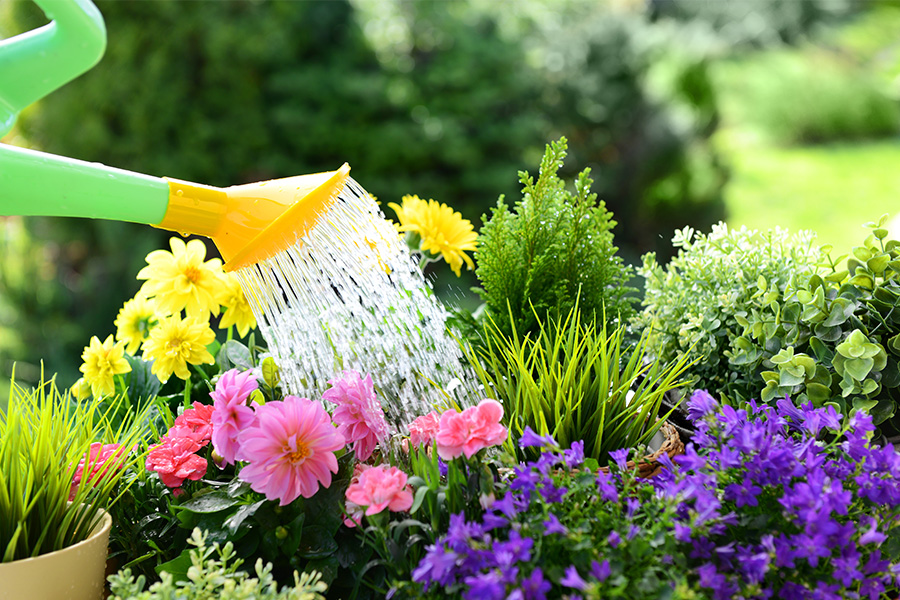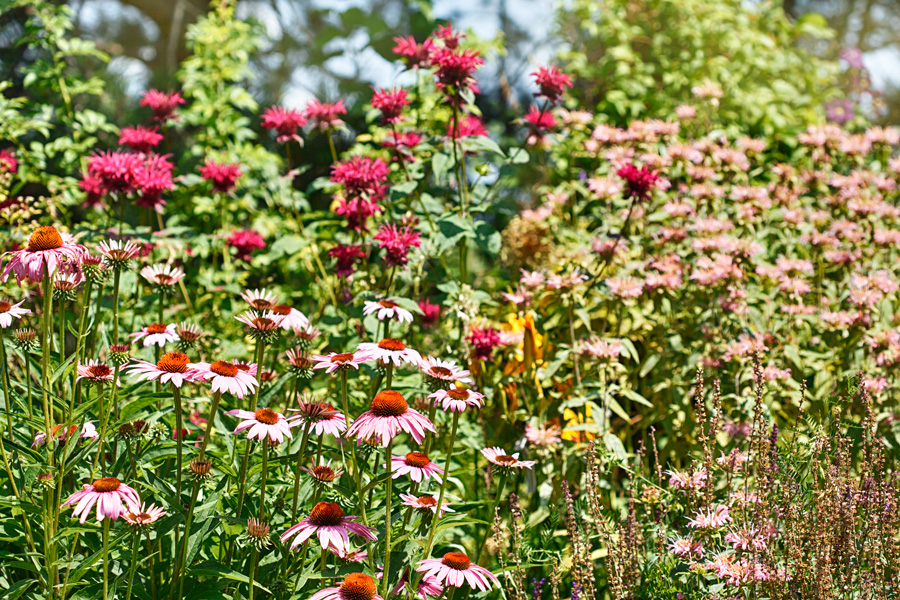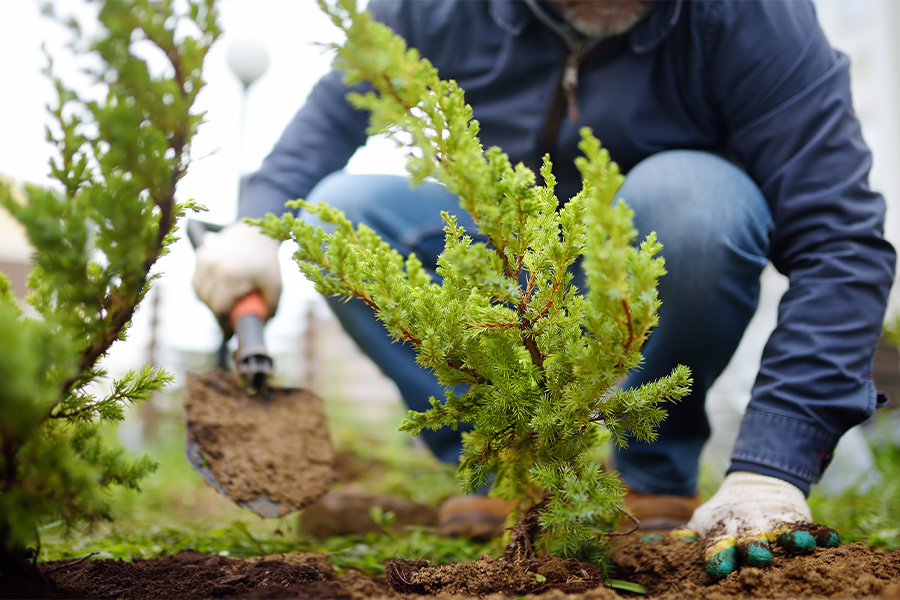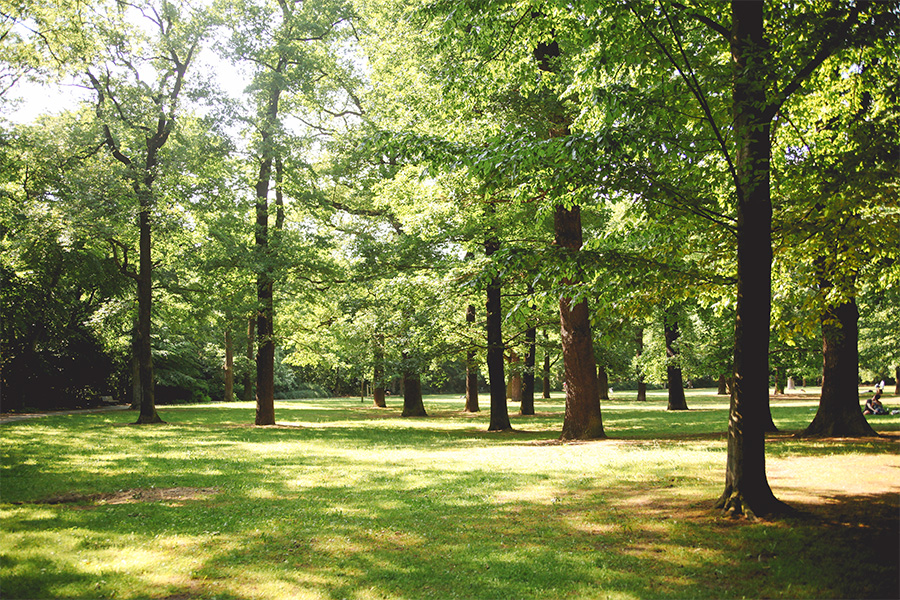Landscaping
-

This resource provides guidelines for the care of established ornamental plants in the landscape. Low-maintenance alternatives to traditional cultural practices are discussed throughout.
Bodie V. Pennisi
|
-

Ornamental plantings can be attractive and beneficial options for the expanse of open ground designated for a septic drainfield. Properly chosen plants help manage moisture and nutrient levels in the soils around the drainfield, and can discourage activities that may cause site compaction and reduce the effectiveness of the system. The drawback is that poor plant choices can create costly maintenance issues, and any septic drainfield repair work could disturb planting areas that you value. By following a few simple guidelines, planting in these areas can be both pretty and practical.
Sheri Dorn
|
-

C 956
Junipers
This resource provides information about variety selection, characteristics, required care, and disease and pest control for juniper plants.
Bob Westerfield
|
-

This publication is a monthly guide for professional managers of commercial, recreational, municipal, institutional or private grounds in Georgia.
Gil W. Landry, Michael D Toews, Paul A. Thomas, Bodie V. Pennisi, Timothy R. Murphy, and Beverly Sparks
|
-

Research has shown that if you properly select, install and maintain ornamental plant, you greatly increase their survival and performance in the landscape. Following BMPs (Best Management Practices) not only conserve moisture in the landscape but will assure overall health and vigor of the ornamental plants.
Bob Westerfield
|
-

This circular discusses the most common ground covers, both native and non-native plants, that are suitable for culture in North Georgia landscapes in shaded areas.
Bodie V. Pennisi and Nathan Eason
|
-

C 1081
New Native Little Bluestems
Little Bluestem (Schizachyrium scoparium) is a drought tolerant, low maintenance native plant. This ornamental, warm season perennial grass tolerates a wide range of soil conditions and is easily grown. Its purplish bronze blooms and vertical clusters of slender leaves make it a lovely addition to any landscape. It is cold hardy in Georgia, although it may suffer moderate damage in cold winters in the North Georgia mountains. Dr. Carol Robacker of the University of Georgia and Dr. Melanie Harrison of the United States Department of Agriculture have recently created new Little Bluestem cultivars with improved form, reduced height, and more intense red or blue foliage. Several of these desirable new plants are now available to the landscape industry and the public!
Carol Robacker and Bodie V. Pennisi
|
-

C 1013
Shade Trees for Georgia
Shade trees are a staple of Southern landscapes and include a variety of species, forms and seasonal appeal. In the Southeastern U.S., shade trees are used most often to provide relief from the summer sun and heat. Additionally, shade trees can be utilized to channel summer breezes to desired locations, add monetary value to a property, define outdoor spaces, and improve landscape sustainability by reducing soil erosion, decreasing storm water flows, increasing rainwater infiltration and increasing wildlife habitat.The information in this publication will assist homeowners in making informed decisions when selecting fast growing shade trees for urban and suburban environments.
Gary Peiffer, Kim D. Coder, Bodie V. Pennisi, and Matthew Chappell
|
-

With proper planning, planting and maintenance, a healthier landscape can be created with less expense, less work and less damage to the world around us.
Bob Westerfield and Daryl Pulis
|